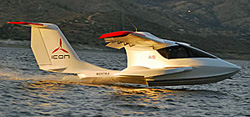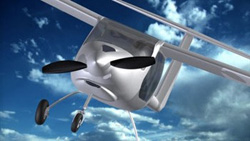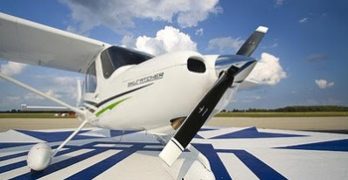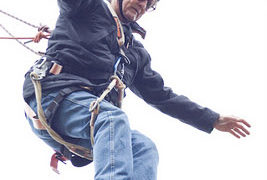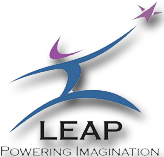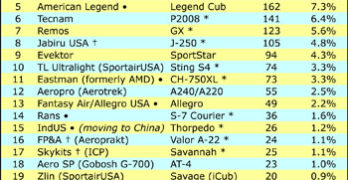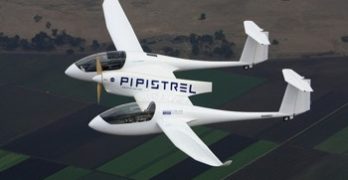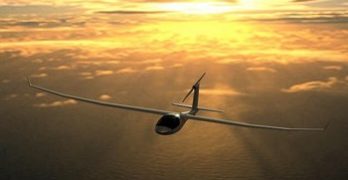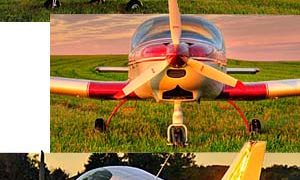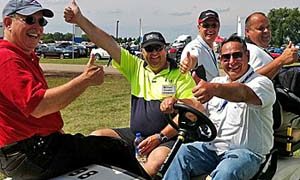Even those who are not Apple fans agree the trend-setting California company’s focus on design beauty draws attention to their products. From their position near the back of the pack a dozen years ago, Apple has become the most valuable tech company in the world. Could this be due to their highly-refined sense of esthetics? More to the point of aviation enthusiasts, is artful design an ingredient in pleasing customers? *** I don’t know what all buyers are thinking but beauty has long enhanced the appeal of most consumer products. It seems the so-called niche aircraft producers have gotten this message perfectly well. Especially this is true for those products that have emerged since Light-Sport Aircraft burst upon the aviation scene. *** Creators of new LSA seaplane designs in particular seemed to have found the religion of design esthetics. Icon leads the pack with their stunning — and extremely well presented — A5.
Search Results for : Pipistrel
Not finding exactly what you expected? Try our advanced search option.
Select a manufacturer to go straight to all our content about that manufacturer.
Select an aircraft model to go straight to all our content about that model.
Knocking Around The InfoVerse
|||| News travels fast these days: Just ask Herman Cain. New tech net scraper Gizmag just ran a blurb on the Pipistrel Alpha that I covered earlier. Gizmag’s focus is on Alpha’s low cost, which as they note is less than €60,000 (currently about $80,000). *** Now consider this: if the euro continues to go through its troubles and drops further against the dollar, imagine a quality SLSA, like the Alpha promises to be (it’s based on a years-proven design — the Vinus/Sinus — with hundreds now delivered), priced at, perhaps, $70,000. For all of us who’ve decried the high costs of LSA, might this be the price point/airplane that would help break the LSA sales logjam? |||| Dynon plans Hands-On SkyView Training at Sebring. Who among us hasn’t sat for the first time in a new LSA and felt brain overload when confronted with an unfamiliar EFIS display?
Cessna Feels The Pinch …and Pinches Back
In a recent piece on AvWeb, Paul Bertorelli takes a good look at Cessna’s decision to bump the price of the Skycatcher by a cool $35K — yes, that’s 35 thousand. Okay, it’s not every day we see a 31+% price hike in a retail price of anything, especially in this economy. *** Yet Cessna’s move should come as no surprise to anyone who knows, as Bertorelli points out, that the price of aircraft has grown faster than the rate of inflation for decades. Thirty years or so ago, a new Cessna Skyhawk could be had for around $30,000. Today it’s 10 times that number, or more than $300,000, whereas inflation applied to that original $30K number would put the figure just north of $100,000…about three times higher. *** Meanwhile, the aviation giant has up until now done its best to keep the price close to it’s original near-$100,000 level.
Unintentional Holiday part Deux
(Note to my readers: the first part of this tome is just below) *** So here I was in Slovenia, unable to fly and three more days before I could return to my wife in Hamburg, unless I wanted to pay another $200 to change the flight. Modern air travel, what a concept. *** Undaunted and determined to enjoy my first visit to this lovely country after two days in bed with a virus (the physical kind, not the airplane), I crawled back into the light and joined up with Rand for a thoroughly enjoyable factory tour, courtesy of Ivo’s daughter Taya (she’s also a partner in the firm), who speaks very good English indeed and gave us a very informative and enjoyable peek at how the company does it’s day-to-day.And what a factory! High tech geothermal heat, solar power (enough to run the entire factory year round, and sell excess back to the grid) and open, sunny, airy spaces all make for a wonderful working environment.
Electric Aircraft Development Alliance Takes Form
A wide range of people sat in a room used all day long by the ASTM Committee that develops the LSA certificate standards. Apparently sitting in a room all day — while the sun shown brightly and the flying would have been great — was not enough punishment for this hard working crowd. Indeed, nearly 30 persons willingly stayed into the evening. What drove such dedication? Electric-powered aircraft. *** The G-30 assembled to work at forming the Electric Aircraft Development Alliance (EADA), a brand new industry organization specifically aimed at electric-powered aircraft. Representatives came from Sikorsky, Yuneec, Pipistrel, Sonex, Alternair, Electra One, Cessna, Bye Aerospace, Lockwood Aircraft, Embry Riddle, FAA, EASA, LAMA, and others. LEAP, the Lindbergh organization, lent energy to help assemble the group and, indeed, they drew a number of people that had not traveled to Tampa, Florida for the ASTM meeting.
Third Quarter 2011 LSA Market Report; Cessna Jumps
Sure enough, by several measures and based on multiple conversations, 2011 is shaping up to be a better year than 2010. Of course, that’s not saying much as all of aviation worldwide was slow last year and in 2009. When you’re near the bottom of the well, everything starts looking up. *** With those thoughts in mind, we present the newest market share report, this one through the third quarter of 2011. In recent years we’ve had folks tell us we ought to show charts of this year’s or this quarter’s performance. But most readers want to know the “installed base,” to borrow a phrase from the trend-setting tech industry. When people talk about Windows versus Apple market share or iOS versus Android, they generally mean how many of all buyers have those systems. *** Nonetheless, we recognize pilots are hungry for more recent info. So for several years, we have discussed near-term performance in the text of our articles even while we present a graphic showing FAA N-number registrations since the beginning.
Green Flight Challenge A Teachable Moment
Posting from Istanbul, Turkey where I’m on vacation with my family, but just couldn’t wait another day to talk a bit about what most everybody in aviation’s been talking about these last several days: the CAFE Green Flight Challenge (GFC). *** History was made when the Pipistrel Taurus Electro G4 twin-fuselage electric-powered aircraft carried four adults, around 1000 lbs. of batteries, one electric motor with a bit prop, and a lot of engineering and piloting savvy to victory in the GFC. They earned themselves $1.35 million in the process. Huge and well-deserved congratulations to Pipistrel!But for my money, the deeper story is not just that they flew off with the biggest aviation dollar prize ever, or even that they accomplished the task of flying 200 miles on one battery charge while also averaging more than 100 mph for the entire flight, or that they did it while “burning” the equivalent of 1 gallon of gas per passenger, or four gallons total…but…that they accomplished all that yet consumed the equivalent of around 1/2 gallon of gas per passenger!
Green Flight Challenge Down to Final Three!
Updates 10/4/11 and 10/5/11 — Congratulations to Pipistrel for their unprecedented third win at a NASA Challenge. Picking up a cool $1.35 million, the company won with their unorthodox dual Taurus G2 fuselages joined by a larger, centrally-mounted electric engine. The custom-configured, four-seat aircraft achieved an amazing 403 passenger miles per gallon of fuel (or its equivalent). After this string of wins, Pipistrel has firmly placed itself in the lead position among highly efficient light aircraft and those powered with electric motors. *** NASA claims the prize purse was the biggest ever awarded for an aviation competition. In second-place a much smaller but still hefty check for $120,000 went to the German eGenius team, NASA announced. *** Read more from our friends at AvWeb and at Flying online. In addition, Aero-News offers a video with more on the potential of electric power (scroll to or search for “The Green Flight Challenge”).
A Pair of New SLSA Arrive Before AOPA Summit 2011
Just in time for this year’s AOPA Summit, welcome to a pair of Special Light-Sport Aircraft, numbers 121 and 122: the first, the formerly named NG 5 LSA, rebadged as the Bristell Fastback by importer Liberty Sport Aviation of Pennsylvania; and the second being the fourth approval for Pipistrel, specifically for their Sinus motorglider (previous Pipistrel approvals included the Virus, Virus SW, and Taurus). *** NG 5 LSA was not previously offered in the U.S. though it was sold in Europe as the NG 4 from Roko Aero. When Roko closed its doors production stopped for the NG 4. It became NG 5 as the company reformed into BRM Aero. Changes occur in any industry but Bristell Fastback designer, Milan Bristela, is a steady hand on the joystick known for his foundational work on the SportCruiser (for a year known as the PiperSport) that is presently ranked #2 in U.S.
Broad Smiles After AirVenture Oshkosh 2011
Reports continue positively for results at AirVenture 2011… despite FAA’s partial shutdown, a media frenzy over the USA’s debt ceiling, a roller coaster ride in the stock markets, and a continuing bum housing market plus general uncertainty. If you can smile after all that, things must be improving. *** GAMA’s report of Type Certified aircraft deliveries for the first half of 2011 shows sales remain far below manufacturing capacity. Thanks significantly to Cessna’s hastened deliveries of Skycatcher, the LSA sector is surviving a bit better; of course, LSA sell many less units than GA and account for much smaller dollar volume. Here’s more evidence of improvement… •• Icon Aircraft announced they secured 143 delivery position sales ($286,000 raked in) at AirVenture for their sexy new A5, expected on the market perhaps by 2012. Icon generously donated 10% of the take to EAA Young Eagles program. •• Flight Design continues to log orders for its LSA but their new four seat C4 has now garnered nearly 100 delivery position orders (at $7,000 apiece).


